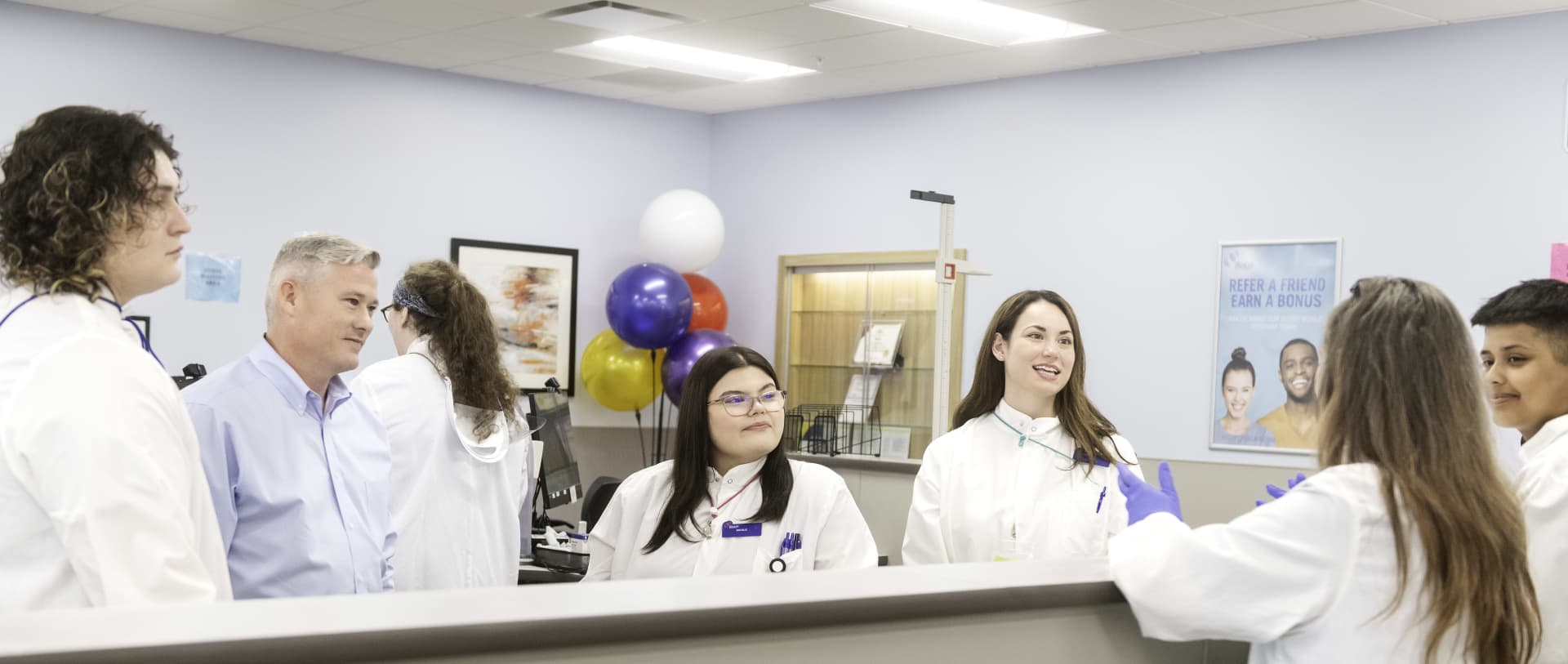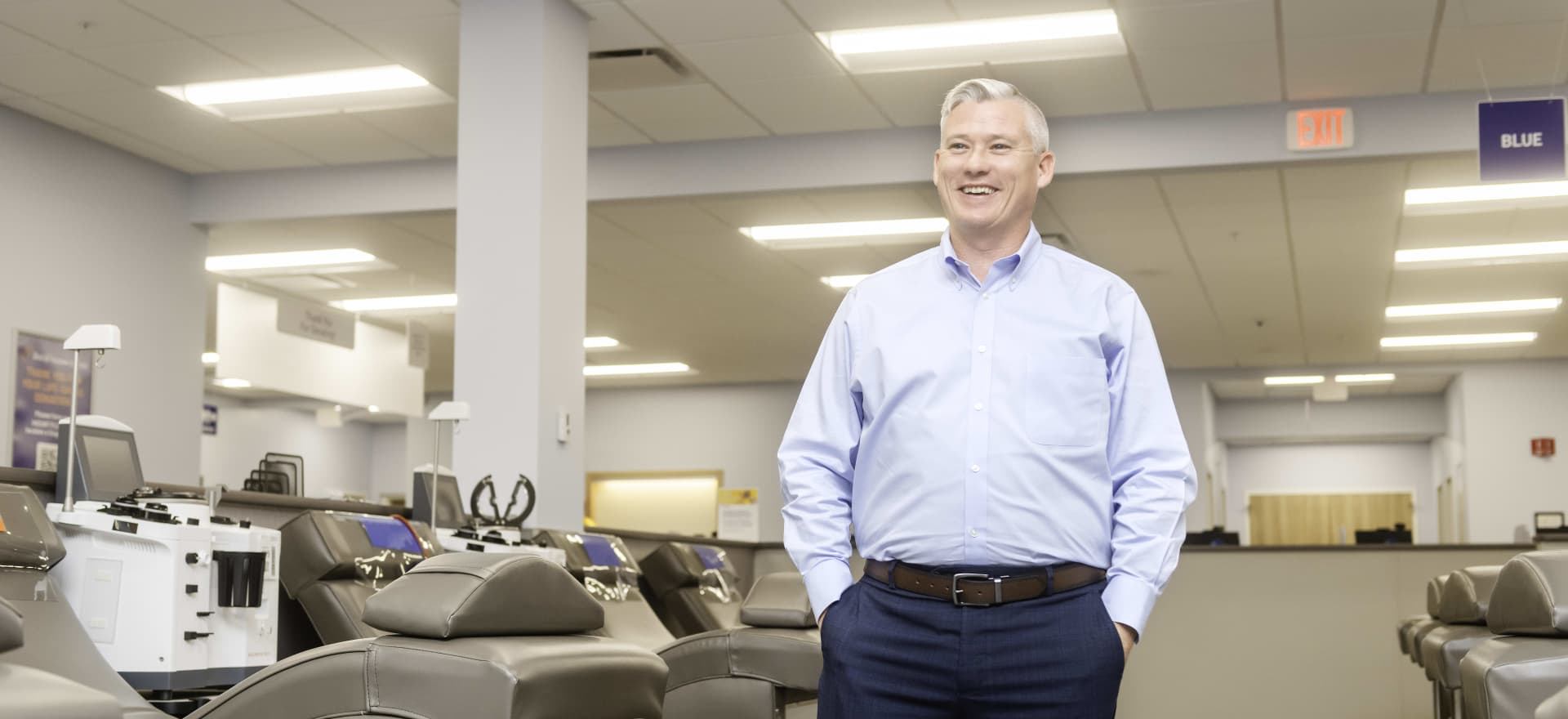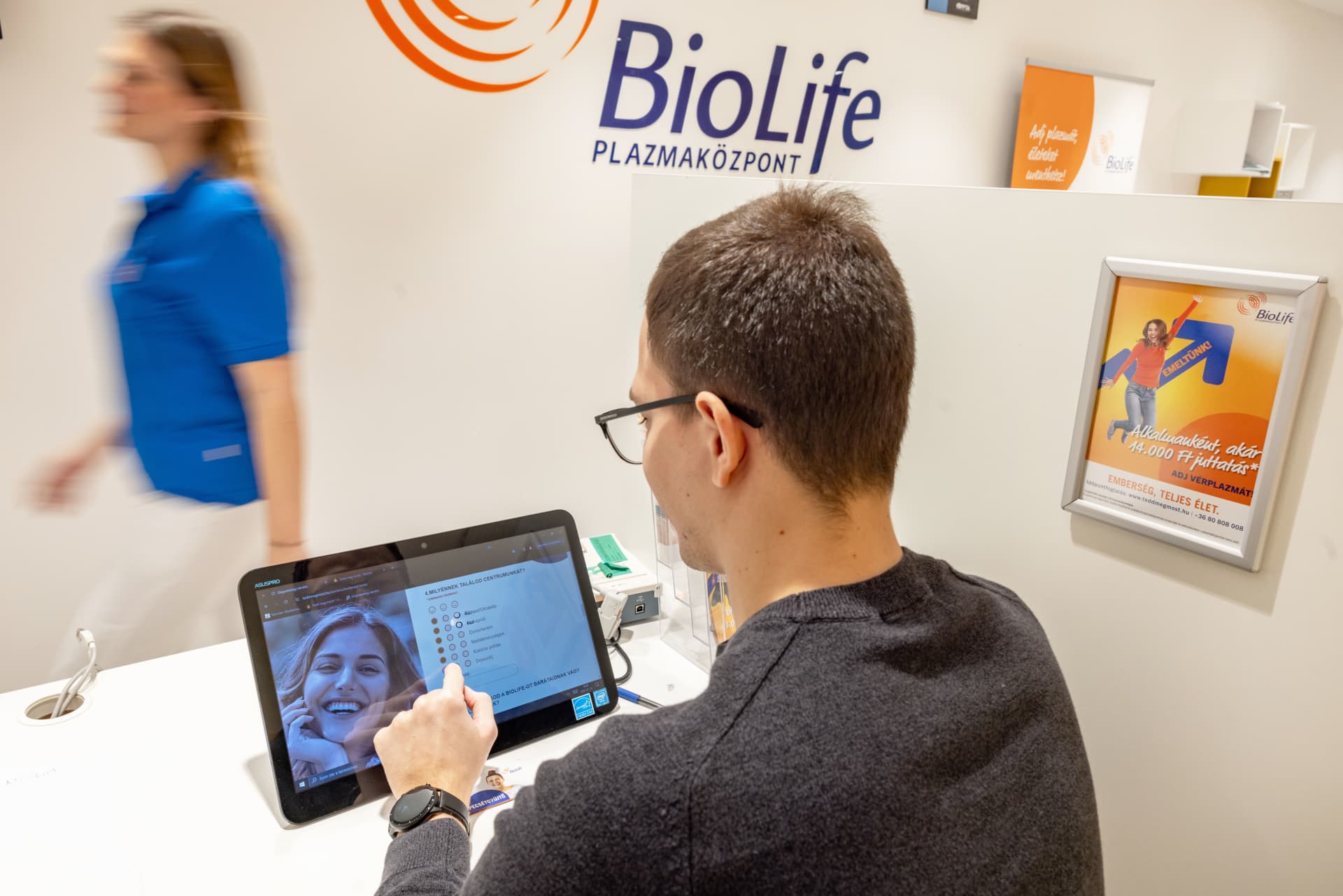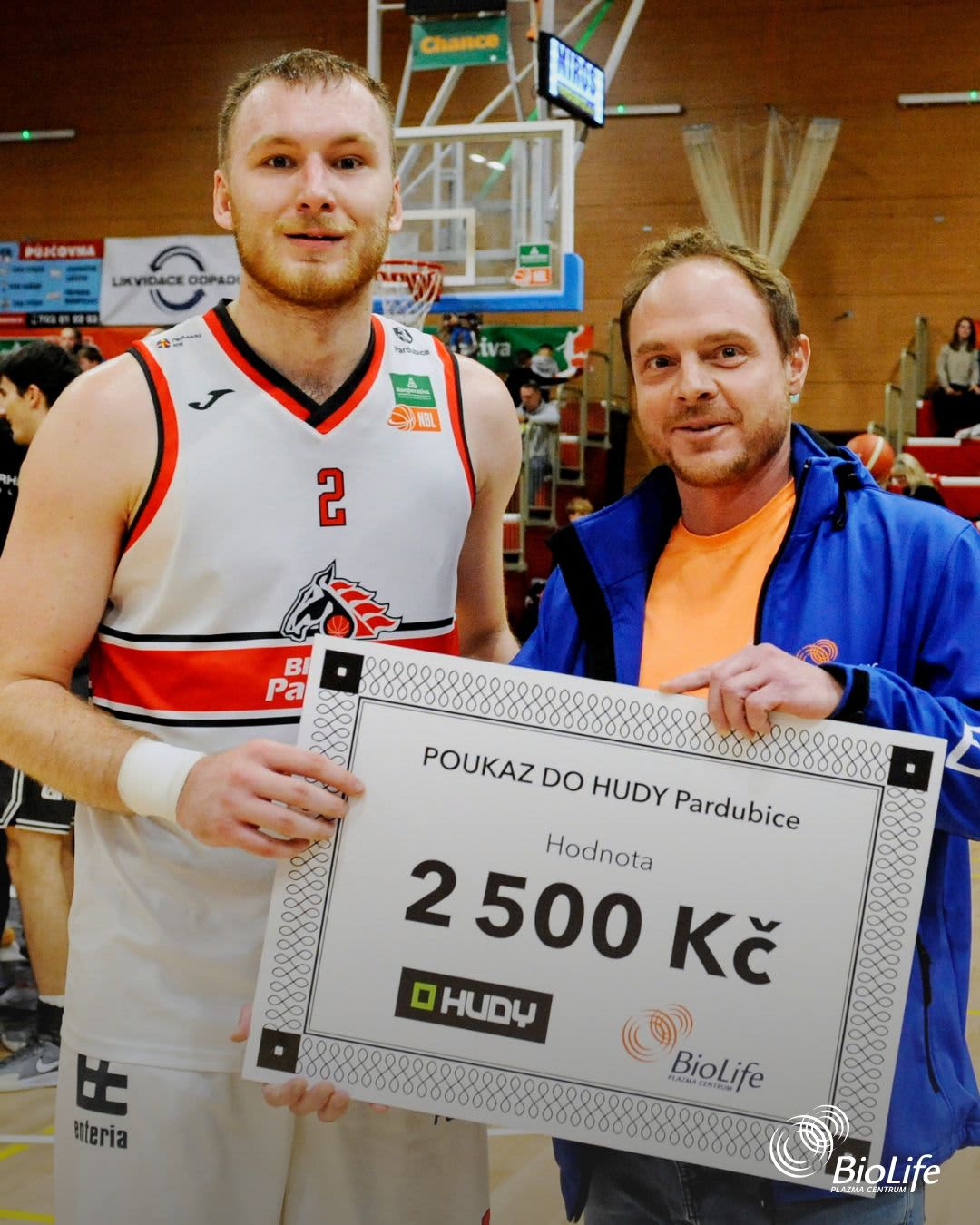Plasma donation powers rare disease treatments | Takeda Stories

A passion for patients and plasma donors drives Takeda’s BioLife employees
Not too long ago, a family of five walked into a BioLife Plasma Services donation center in Texas, managed by Thomas Byres. The parents weren’t there to donate plasma, but instead to share the impact that life-sustaining plasma-derived therapies have had on transforming their family members’ lives.
“The parents and their three young children all needed treatment with plasma-based therapies several times a week just to be able to step outside,” Thomas says. “As a father myself, seeing their situation made the urgent need for these medicines and the importance of our work in plasma donation incredibly real.”
Hundreds of thousands of people across the world with rare and complex chronic conditions rely on plasma-derived therapies, including those individuals – like the family Thomas met – who live with immunodeficiencies, as well as hemophilia and many other rare conditions. These patients often have few or no other treatment options.
It takes between 130 and 1,200 plasma donations to treat just one person with plasma-based medicine for one year.1,2 Plasma-derived therapies can only be made from human plasma, generously given by healthy donors.3 Thomas’s BioLife plasma donation center – part of Takeda – is one of more than 270 across the United States and in Europe.

The journey from plasma donation to the development of a life-changing therapy is long and complex, with some therapies requiring up to 12 months to develop – much longer than many other medications. At every critical juncture, this journey is powered by dedicated individuals. These are the people who dedicate their expertise and passion to advancing plasma-derived therapies and supporting their availability for patients who depend on them. Thomas is proud to be among them.
“When I explain what we do at BioLife, I tell people we’re changing lives each and every day,” Thomas shares.
Thomas joined BioLife nearly 14 years ago as a Medical Historian and advanced through various positions before becoming a Center Manager in 2023. This has given him a unique, deeply personal perspective on the important role BioLife plays in supporting patient access to essential therapies. It fuels his dedication to every plasma donor that walks through their doors.
“Our job at our plasma donation centers is to provide donors the best experience possible,” Thomas explains.
BioLife’s focus on enhancing the donor experience includes looking for ways to make the process smoother and more efficient while still meeting the highest standards of compliance. At Thomas’s center, and others like it, donors benefit from innovations that personalize their experience, including the industry’s first dedicated mobile app, digital scheduling and web resources. BioLife teams also use advanced technology to help optimize staffing and appointments so that donors are seen promptly and spend less time waiting.

“Every action we take here is about ensuring that the commitment of our donors translates into life-changing medicine, safely and efficiently,” Thomas shares. While prioritizing donor safety, health and comfort, BioLife also maintains an equally rigorous focus on the quality and safety of the plasma collected. This is evident in every detail, through measures like extensive donor screening processes and plasma testing protocols that meticulously screen each donation.
What truly sets BioLife apart, according to Thomas, is a deep sense of responsibility. It’s reflected in the thorough processes designed to safeguard every donor's health and well-being, and in the commitment to provide a consistent and positive experience for each donor at every visit.
For more information about our BioLife locations, please visit our Austria, Czech Republic, Hungary or U.S. websites.

Did you know…?
Collecting essential plasma in Czechia: Radim’s story

BioLife’s plasma donation centers in Europe are also powered by dedicated employees who are passionate about BioLife’s mission. Those include Radim Kožíšek.
“It’s more than a job. It’s where purpose meets people. Every day, I see how our work can change lives,” he shares.
Radim has served as a Group Manager overseeing three BioLife plasma donation centers in the Czech Republic for the past five years. His leadership has driven donor satisfaction, operational excellence and a strong team culture. What drives him is a passion for the patients who rely on plasma-derived therapies.
“I always remind myself and my great team that behind every donation is a story. Somewhere, a patient with a rare condition has a chance at a better life in part because of what we do.”
One of Radim’s biggest contributions is helping to advance the digital transformation of BioLife for the benefit of both donors and patients. Radim played a key role in launching the Blood Plasma Management System (BPMS), a transformative project that has enhanced donor experience and streamlined operations in the Czech Republic, with plans to roll out to other BioLife countries.
“For us, the digital transformation is about driving improvements in the work we do and enhancing the donor experience so that we can ultimately serve patients better. Besides BPMS, we are also experiencing new tools such as our donor app which is a key link between donors and us at centers. In general, it’s not just about innovation, it’s about working more efficiently, staying connected, and making sure every drop of plasma makes a difference.”

The theme of community is one that resonates with Radim – for one, the local communities around the donation centers are more than just a location. Radim believes that BioLife has a responsibility to be a good neighbor. Among other community initiatives, Radim’s plasma donation center supports local athletic and academic activities.
Radim also sees the donors as not just a collection of individuals but a community of like-minded, generous people who return both to give of themselves and to reconnect with staff and other donors who share a unique purpose.
“We aim to create a welcoming space where people feel valued. Not just for their plasma donation, but for who they are. Many come regularly, and over time, we build real relationships.”
References
- Plasma Protein Therapeutics Association (PPTA). Plasma Collection and Manufacturing. https://www.pptaglobal.org/resources/plasma-collection-and-manufacturing. Accessed February 2024.
- U.S. Department of Health and Human Services (HHS). Blog. For Some People with Rare Diseases, Plasma Donations Are Life Saving. https://www.hhs.gov/blog/2023/02/28/for-some-people-with-rare-diseases-plasma-donations-are-life-saving.html. Accessed February 2024.
- What is Plasma? - Donating Plasma. https://www.donatingplasma.org/donation/what-is-plasma. Accessed August 2025.
- Koch, E. et al. Incentives for Plasma Donation. Vox Sanguinis. International Society of Blood Transfusion. 2024; 119: 775–784. https://onlinelibrary.wiley.com/doi/full/10.1111/vox.13644.
- Cho, J. and Hiskey, M. Plasmavigilance: Source plasma joins the call to arms. Transfusion. 2021; 61: 2803-2805. https://onlinelibrary.wiley.com/doi/full/10.1111/trf.16668.
C-ANPROM/INT/NON/0094; September 2025
Share this story
